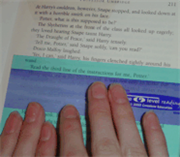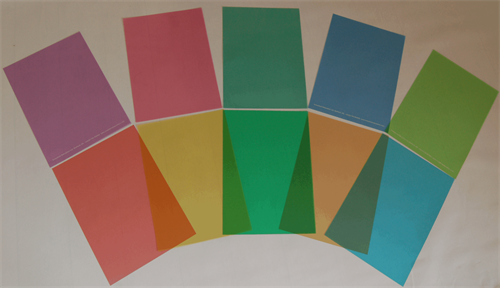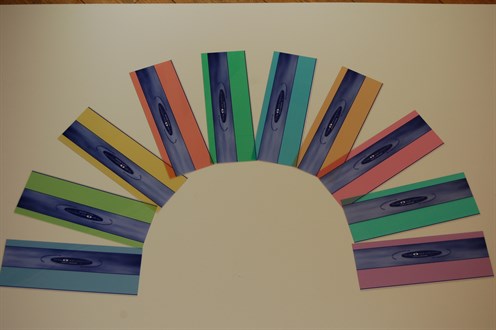Visual Stress: "lt’s like your headache just went away”...
Eye Level Reading Rulers, A4 Overlays and Tinted Exercise Books
This article was written for the Association of Teachers of Singing, and sent to us. What applies to music notes on a white page applies equally to letters! In particular, the author emphasises the effects of pressure on her students, and how this seems to increase visual difficulties for her students. Her experience highlights the need for coloured overlays or reading rulers to be available for more students, especially in examinations.
It all started with a student who could play beautifully and read music well. Yet even though her ability was grade four and her sight -reading excellent, she played badly in front of others. Her frustration was very distressing to me as a teacher. Endless support and encouragement helped but did not improve her performing consistently. Over the next few months I noticed a pattern in her sudden loss of ability. They happened when she was a little under the weather, had masses of homework or perhaps had an upset with a friend or family member.
A comment from a friend led me to see if there was any problem with her possibly being dyslexic. I ordered some coloured overlays and waited rather sceptically for her next lesson. It was a bad day, concentration was low and she had had a row with her mother over some school shoes. We struggled through a bit of sight-reading practice and then I tried out the coloured overlays one colour at a time. Some made it worse and some made it a little easier. Then I put the yellow one over the music. She played it beautifully! We tried several more pieces and to the astonishment of both of us the improvement was without a doubt obvious.
Since this success I have tried these sheets with all my students who stumble and are frustrated by their lack of progress and I am amazed by the results. Over one third of my students have improved enormously with the sheets for both piano and sight singing. Their ages range from eight to seventy two. It has also improved the reading of several students including three of the “over sixties” who had previously blamed their opticians for wrongly prescribed reading glasses for when they read through an overlay they have no problem at all.
Since then I have had several discussions with an expert in dyslexia in this area. I have found that many people develop a low opinion of themselves and of their performance. We’ve all heard “I can play it perfectly at home” but the added pressure of playing for your teacher (the one you most want to play well for) puts the pressure level too high and the black notes on white paper just move about, making it impossible for the student to concentrate enough to keep them still.
These coloured overlays have been a godsend for many of my students who have felt, in their own words “discouraged, stupid, useless and moronic”. They have turned several into excellent sight—readers who previously went into a panic at the mention of “sight-reading”. Somehow the colours soothe the eyes and help to calm the student. Even the experts on dyslexia cannot explain how they work. I can only say that they do work and do so very dramatically. The colour of the sheet is not the same for every student. Some are better with green, others with red or blue. I’ve found the most popular colour is yellow but the student knows straight away. “lt’s like your headache just went away” is a common comment.
A student’s self worth is enormously important. If we want emotional performances from them they need to be self assured and happy with themselves. These sheets have given back to several students that great spark of enthusiasm for music and even more importantly for singers the gift of “I can look at myself in a mirror” ...
...Why as teachers should we go to the expense and bother? ... But the rewards are great. To watch a student change from a head down slouch to an upright confident strut says it all!
(By Lynn Cocup. Reproduced with permission)





